| Based on the Midrash we identified the color and gem of each individual Tribe. It should be noted that in Rabbinical tradition other opinions exist
that give different identifications. Also, our own interpretation of what the Midrash (Numbers Rabah, BaMidbar, b; 7) actually says on some points may not be accurate. Nevertheless, the results correspond with Tribal Identifications we have made based on other evidence. Jacob, who was renamed Israel, had 12 sons from 4 wives. His wives were Leah and Rachel who were sisters; Bilhah the maidservant of Rachel; and Zilpah maidservant of Leah. The sons of Leah were Reuben, Simeon, Levi, Judah, Issachar, and Zebulon. |

Reuben.
Reuben had the color red and the ruby gem.
The etymology of the name ruby is from Latin "rubeus" i.e. "red". Ruby is also a nickname for someone named Reuben.
We identify Reuben with groups that settled mainly amongst the French. The official French colors, as on the French flag, are red, white, and blue.

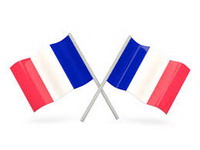
On a hunch we entered Ruby and the French into the Google Search Engine.
We came up with one of the queens of France dressed in a ruby-colored dressed.
http://orderofsplendor.blogspot.co.il/2013/05/tiara-thursday-french-crown-ruby-parure.html
# When Marie Thérèse returned to France, the crown jewels (which, in France and other countries, are not necessarily just coronation regalia) included a ruby and diamond parure made in 1811 by Maison Nitot for Empress Marie Louise (1791-1847), the second wife of Napoleon I. This was an extensive parure, including items you'd expect to see in a parure - a tiara, necklace, earrings, bracelets - but also items such as a crown and a belt. The set used nearly 400 rubies and more than 6,000 diamonds in all. #
What is more interesting is that the crown jewels of France included quite a few rubies and other ruby-colored gems.
See Also:
http://www.royal-magazin.de/french/crown-jewel-ruby-replica.htm
if you look around you may also find diamonds and emeralds in the same context but rubies seem to predominate.
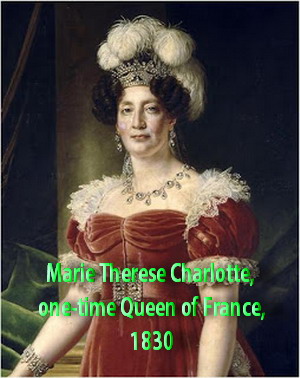
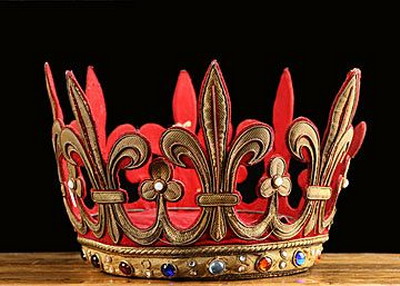
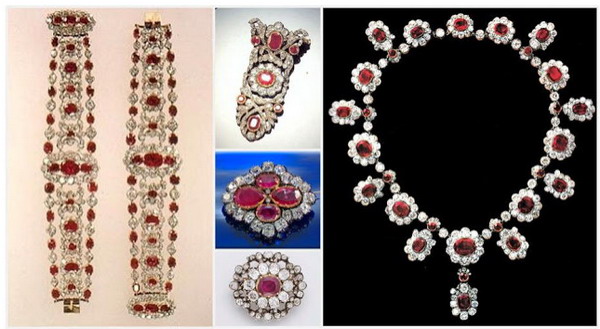


The unofficial symbol of France is the rooster or cock.
Gallic rooster
http://en.wikipedia.org/wiki/Gallic_rooster
From Wikipedia, the free encyclopedia
Extracts:
The Gallic rooster (French: le coq gaulois) is an unofficial national symbol of France as a nation, as opposed to Marianne representing France as a State, and its values: the Republic. The rooster is also the symbol of the Wallonia region and the French Community of Belgium. Other heraldic animal officially used by the French nation includes the French Imperial Eagle, symbol of the First and Second French Empire under Napoleon I and Napoleon III.
During the times of Ancient Rome, Suetonius, in The Twelve Caesars, noticed that, in Latin, rooster (gallus) and Gauls (Gallus) were homonyms. ...
Its association with France dates back from the Middle Age and is due to the play on words in Latin between Gallus, meaning an inhabitant of Gaul, and gallus, meaning rooster, or cockerel.
The rooster in Folklore and Jewish religious tradition is associated with the rising sun and the coming of dawn. Reuben in Jewish traditional art (as seen in synagogues, etc) is often represented by a rising sun.
On my refrigator I have a magnetized decoration (of the type found in gift shops, etc) depicting the 12 tribal symbols. This too shows the symbol of Reuben as a rising sun as shown below.
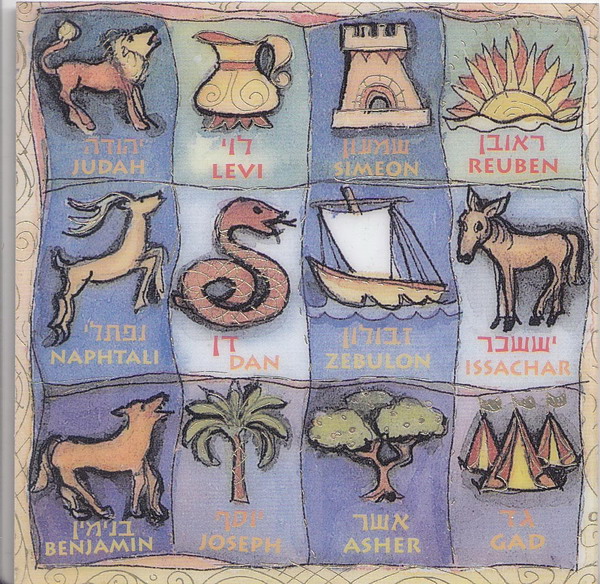
The rooster symbol of the French corresponds with the Jewish coming of dawn representation concerning Reuben. French depictions of this Rooster national emblem often emphasize the red portion of the head.
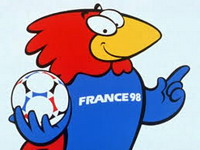
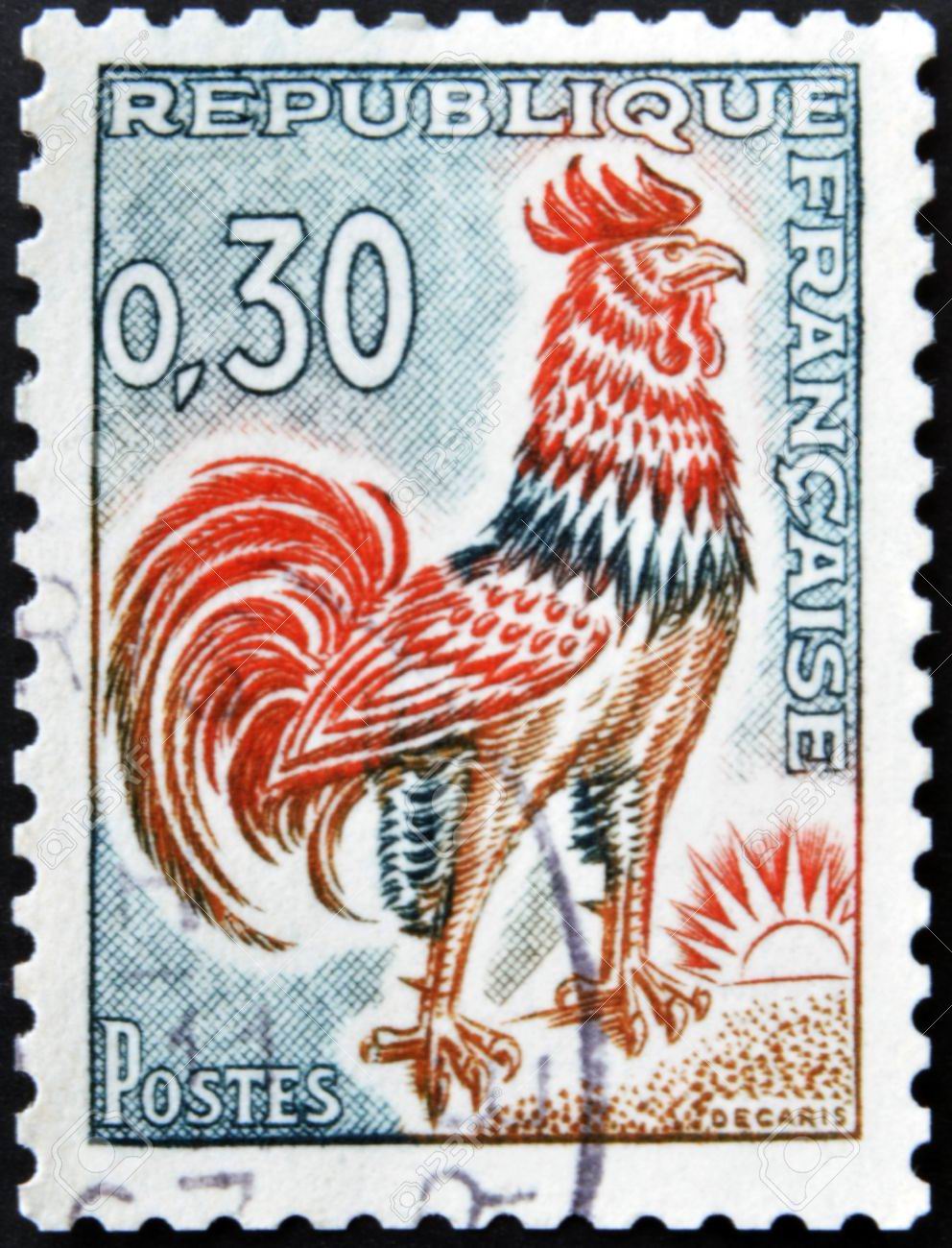
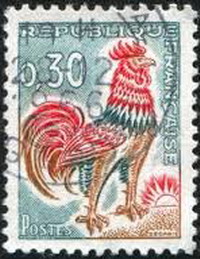
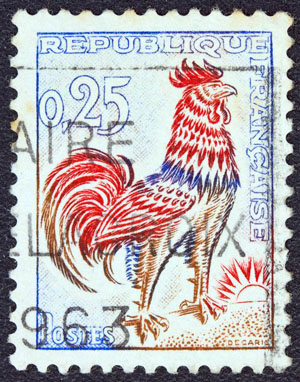
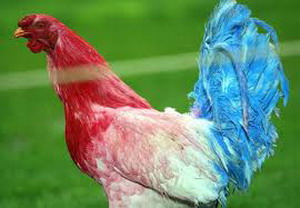

 |
Reuben. Reuben had the color red and the ruby gem. The etymology of the name ruby is from Latin "rubeus" i.e. "red". Ruby is also a nickname for someone named Reuben. We identify Reuben with groups that settled mainly amongst the French. The official French colors, as on the French flag, are red, white, and blue. |   |
|
On a hunch we entered Ruby and the French into the Google Search Engine. We came up with one of the queens of France dressed in a ruby-colored dressed. http://orderofsplendor.blogspot.co.il/2013/05/tiara-thursday-french-crown-ruby-parure.html
What is more interesting is that the crown jewels of France included quite a few rubies and other ruby-colored gems. See Also: http://www.royal-magazin.de/french/crown-jewel-ruby-replica.htm if you look around you may also find diamonds and emeralds in the same context but rubies seem to predominate. |   |
 | |
 |  |
The unofficial symbol of France is the rooster or cock.
The rooster in Folklore and Jewish religious tradition is associated with the rising sun and the coming of dawn. Reuben in Jewish traditional art (as seen in synagogues, etc) is often represented by a rising sun. On my refrigator I have a magnetized decoration (of the type found in gift shops, etc) depicting the 12 tribal symbols. This too shows the symbol of Reuben as a rising sun as shown below.
The rooster symbol of the French corresponds with the Jewish coming of dawn representation concerning Reuben. French depictions of this Rooster national emblem often emphasize the red portion of the head. | ||||
 |  |
 | ||
 |  |
 | ||